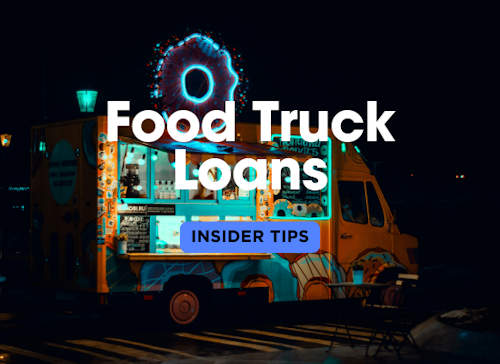Starting a food truck business can be an exciting venture, but getting the right funding can sometimes feel like a maze. Food trucks require more than just the truck itself – think equipment, licensing, and marketing to get your brand on the road. Whether you’re just starting out or looking to expand, there are various loan options available. Here, we’ll dive into the different types of loans, from SBA loans to equipment financing, giving you an idea of what might work best for your food truck business.
Hint: Insider Tips below!
| IncBook: Loan Options for Food Trucks | ||||
|---|---|---|---|---|
| Loan Type | Rates | Loan Amounts | Pros | Cons |
| SBA 7(a) Loan | 5.5% – 8% | $50,000 – $5 million |
|
|
| Equipment Financing | 6% – 16% | Up to 100% of equipment cost |
|
|
| Short-Term Loan | 8% – 30% | $5,000 – $250,000 |
|
|
| Business Line of Credit | 7% – 25% | $10,000 – $500,000 |
|
|
| Merchant Cash Advance (MCA) | 1.1 – 1.5 factor rate | $5,000 – $200,000 |
|
|
| Crowdfunding | N/A | $1,000 – $500,000 |
|
|
| Peer-to-Peer (P2P) Lending | 6% – 36% | $2,000 – $500,000 |
|
|
| Microloans | 7% – 18% | $500 – $50,000 |
|
|
| Vendor Financing | Varies by vendor | Up to 100% of vendor costs |
|
|
| Personal Loans | 5.99% – 36% | $2,000 – $100,000 |
|
|
| Credit Cards | 12% – 29% | $1,000 – $50,000 |
|
|
Insider Tips
🎯 Leverage Seasonal Peaks:
Food trucks often make the bulk of their revenue during certain seasons or events. When applying for a loan, use past sales data from peak seasons to show lenders your potential for revenue growth. For example, emphasize how you can repay faster due to event-based surges like food festivals or street fairs.
🛠 Utilize ‘Retrofit Financing’:
Instead of purchasing an entirely new truck, consider applying for a loan to retrofit a used truck. This can dramatically lower the overall loan amount while still allowing you to create a high-end, custom kitchen on wheels. Some lenders are more flexible with retrofit loans as the cost of modifications is often lower than purchasing new equipment.
🌍 Play Up Your Local Sourcing:
Many lenders are increasingly supportive of eco-friendly and locally sourced businesses. Highlight that your food truck sources local produce, uses sustainable packaging, or has a reduced carbon footprint. You can get better loan terms from green lenders or community banks that support local economic initiatives.
📅 Event-Based Repayment Plans:
Some lenders offer flexibility in repayment schedules. If you have clear data on high-revenue events (e.g., summer concerts, sports events), negotiate for repayment terms based around your busiest times. This helps you avoid cash flow issues during slower months while still making strong payments when business is booming.
🍴 Partner with Commissary Kitchens:
When applying for a loan, show that you’re using a commissary kitchen for food prep and storage. Lenders like to see that you have a solid plan for efficiency and logistics, and working with a commissary can also lower your operating costs. It’s a great way to reduce the perceived risk of lending, especially for new food truck businesses.
🧾 Break Down Your Profit Margins:
Food truck owners should break down their profit margins in a granular way when talking to lenders. Show lenders how each menu item is a potential revenue source by calculating cost per item sold versus revenue. This detailed data can give you an edge, showing that you have a clear understanding of your margins, which builds confidence in your business’s profitability.
🚚 Location Contracts Are Gold:
If you’ve secured a high-traffic location, such as a spot outside a stadium, university, or downtown area, make sure to include this in your loan application. Contracts for prime spots act like collateral in the lender’s eyes since they ensure consistent foot traffic and revenue, which can help you secure better terms or a higher loan amount.
🛢️ Fuel Efficiency Upgrades Can Help:
If you plan to upgrade your truck for fuel efficiency, mention this in your loan application. Energy-efficient vehicles or those with green certifications might qualify you for lower interest rates, especially if you’re targeting a lender with a focus on sustainability. Plus, it shows you are planning for long-term operational cost savings.
💡 Build a Strong Digital Presence:
Lenders love to see a well-thought-out marketing plan. If you have an active social media presence or are known in your community, highlight this in your application. Mention how you use platforms like Instagram to announce your locations, or how you’ve built a following of loyal customers. A strong online presence equals more consistent sales, which is a good sign for any lender.
👥 Build Vendor Relationships:
Highlight any relationships with key food vendors or supply chains. If you’ve been able to lock in discounted rates on ingredients, equipment, or other supplies, this can reduce your operating costs and improve profitability. Mentioning these partnerships can give lenders added confidence that you’ve built a reliable support network around your business.



